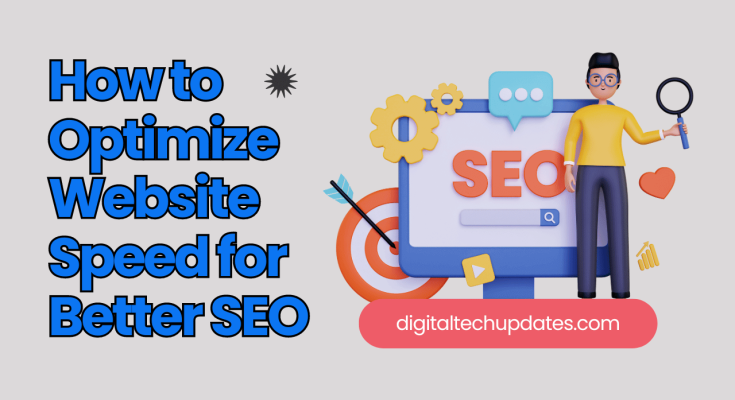In today’s digital landscape, website speed is a critical factor influencing both user experience and search engine rankings. Google has made it clear that site speed is a ranking factor, and with the increasing number of mobile users, optimizing your website for speed is more important than ever. In this guide, we’ll explore effective strategies to optimize website speed and improve your SEO rankings.
Why Website Speed Matters
- User Experience: A fast-loading website enhances user satisfaction. Users expect pages to load quickly; if they don’t, they are likely to abandon your site.
- SEO Rankings: Google considers site speed as a ranking factor. Slow-loading pages can lead to lower rankings in search results, negatively affecting your visibility.
- Conversion Rates: Research shows that even a one-second delay can result in a significant decrease in conversions. Users are more likely to complete transactions on faster websites.
1. Analyze Your Current Speed
Before you begin optimizing your website speed, it’s essential to assess your current performance. Use tools like:
- Google PageSpeed Insights: This tool provides detailed insights into your website’s speed performance on both mobile and desktop devices, along with suggestions for improvement.
- GTmetrix: GTmetrix offers a comprehensive analysis of your website’s speed, including load times and suggestions for enhancements.
- Pingdom: This tool allows you to test the speed of your website from various locations worldwide.
2. Optimize Images
Images often make up a significant portion of a website’s loading time. Here are ways to optimize images:
- Compression: Use tools like TinyPNG or ImageOptim to reduce file size without sacrificing quality. Aim for a balance between quality and size.
- Proper Formats: Use appropriate formats like JPEG for photographs and PNG for graphics with transparency. Consider using WebP format for its superior compression capabilities.
- Responsive Images: Implement responsive images with the
srcsetattribute to ensure the correct size is delivered based on the user’s device.
3. Minimize HTTP Requests
Each element on your webpage (images, scripts, stylesheets) requires an HTTP request. Minimizing these requests can significantly improve load times:
- Combine Files: Merge CSS and JavaScript files to reduce the number of requests.
- Use CSS Sprites: Combine multiple images into one sprite sheet to minimize image requests.
- Limit External Scripts: Reduce the use of external scripts, such as ads and social buttons, to decrease loading time.
4. Enable Browser Caching
Browser caching allows your website to store certain elements on users’ devices, enabling faster load times on subsequent visits:
- Leverage Browser Caching: Set up caching for your static resources (images, CSS, JavaScript) by adding cache-control headers. This can be done in your
.htaccessfile or through your content management system (CMS) settings. - Expire Headers: Configure expire headers to specify how long browsers should keep cached files. This reduces load times for returning visitors.
5. Minify CSS, JavaScript, and HTML
Minification is the process of removing unnecessary characters from your code without affecting functionality:
- Tools: Use tools like Minify, CSSNano, or UglifyJS to minify your CSS and JavaScript files.
- Reduce Whitespace: Remove comments, white spaces, and line breaks to decrease file sizes.
6. Optimize Your Server Response Time
Server response time is the duration it takes for your server to respond to a request. A slow server can hinder your site’s performance:
- Choose a Reliable Hosting Provider: Opt for a reputable hosting service that offers high uptime and performance.
- Utilize Content Delivery Networks (CDNs): A CDN stores copies of your website on multiple servers worldwide, allowing users to access the closest server for faster loading times.
- Reduce Server Load: Optimize your database by cleaning up unnecessary data and using caching plugins if you’re on a CMS like WordPress.
7. Use a Content Delivery Network (CDN)
A CDN distributes your website’s content across multiple servers around the globe, reducing the distance data must travel to reach users:
- Benefits: CDNs improve load times for users who are far away from your main server, enhance site security, and provide scalability during traffic spikes.
- Popular Options: Consider using CDNs like Cloudflare, Amazon CloudFront, or StackPath for improved performance.
8. Optimize CSS and JavaScript Delivery
Loading CSS and JavaScript files efficiently can significantly enhance speed:
- Asynchronous Loading: Load JavaScript files asynchronously to prevent them from blocking the rendering of your page.
- Critical CSS: Inline critical CSS for above-the-fold content to ensure it loads quickly while deferring the loading of non-critical CSS.
9. Monitor Performance Regularly
Website speed optimization is an ongoing process. Regular monitoring ensures your website remains optimized as you add new content:
- Use Monitoring Tools: Set up alerts through tools like Google Analytics or New Relic to track your site’s speed.
- Regular Audits: Conduct regular audits using tools like PageSpeed Insights and GTmetrix to identify and address new performance issues.
Conclusion
Optimizing your website speed is essential for providing a better user experience, improving SEO rankings, and increasing conversion rates. By following the strategies outlined in this guide, you can significantly enhance your site’s performance. Remember, a faster website not only pleases your visitors but also keeps you ahead of the competition in the search engine results pages.
By consistently monitoring and refining your website’s speed, you ensure a more engaging experience for users, fostering loyalty and improving your overall SEO efforts. Make website speed optimization a priority and watch your traffic and rankings soar!




